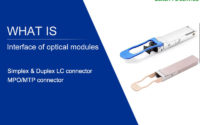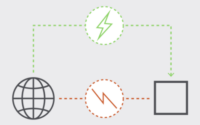Understanding Fiber Optic Connectors: Types, Differences, and Applications
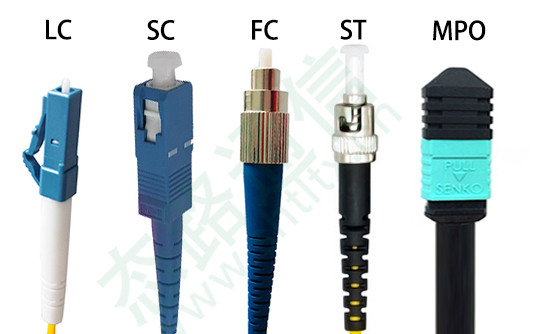 Fiber optic connectors are essential components in modern communications networks, enabling seamless data transmission over long distances with minimal losses. With a wide variety of connector types available, choosing the right connector for your network can be challenging. In this blog, we’ll explore the most common types of fiber optic connectors, their differences, and their applications.
Fiber optic connectors are essential components in modern communications networks, enabling seamless data transmission over long distances with minimal losses. With a wide variety of connector types available, choosing the right connector for your network can be challenging. In this blog, we’ll explore the most common types of fiber optic connectors, their differences, and their applications.
What is a fiber optic connector?
Fiber optic connectors are devices used to connect optical fibers, ensuring precise alignment and efficient light transmission. Whether in data centers, telecommunications or enterprise networks, these connectors are critical to establishing reliable connections in fiber optic networks.
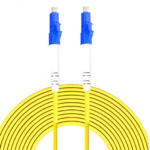
Common Types of Fiber Optic Connectors
LC (Lucent Connector)
The LC connector is a small fiber optic connector that is widely used in high-density network environments. The following is a detailed description:
Size: Compact.
Design: Duplex or Singlemode with 1.25mm ferrule.
Applications: High-density environments, data centers, and telecommunication networks.
Advantages: compact structure, easy installation, widely used in modern networks.
SC (customer connector or standard connector)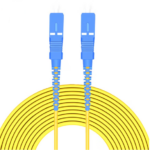
The SC connector is a widely used fiber optic connector known for its simplicity and reliability. Here is a detailed description:
Size: Medium.
Design: Push-pull mechanism with 2.5 mm ferrule.
Applications: Data communications, telecommunications and CATV networks.
Advantages: easy to use, durable, and cost-effective.
ST (straight tip)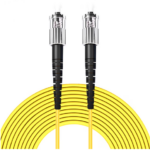
The ST connector is a widely used fiber optic connector known for its durability and reliability. Here is a detailed description:
Size: Medium.
Design: Bayonet fitting with 2.5 mm ferrule.
Applications: Legacy networks, industrial environments and multimode systems.
Pros: Rugged and reliable, but less common in modern installations.
FC (Flange Connector)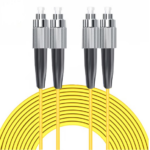
FC connector is a widely used fiber optic connector, known for its high precision and high reliability. The following is a detailed introduction:
Size: Medium.
Design: Screw-in coupling with 2.5 mm ferrule.
Applications: High vibration environments, test equipment and single-mode systems.
Advantages: Strong connection and low insertion loss.
MTP/MPO (Multi-Fiber Termination Push-in/Pull-out)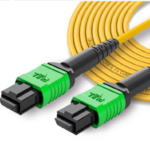
The MTP connector is a high-density fiber optic connector designed for efficient multi-fiber connections. The following is a detailed description:
Size: Large form factor.
Design: Multi-fiber connector (typically 12, 24, or 48 fibers).
Applications: High-density data centers, 40G/100G networks.
Advantages: Supports high-speed, high-bandwidth applications.
What are the main differences between fiber optic connectors?
| Connector Type | Ferrule Size | Coupling Mechanism | Density | Typical Use Cases |
|---|---|---|---|---|
| LC | 1.25 mm | Push-pull | High | Data centers, enterprise |
| SC | 2.5 mm | Push-pull | Medium | Telecommunications, CATV |
| ST | 2.5 mm | Bayonet | Low | Industrial, military |
| FC | 2.5 mm | Threaded | Low | High-vibration environments |
| MTP/MPO | Multi-fiber | Push-pull | Very High | Data centers, backbone |
How to Choose the Right Fiber Optic Connector?
Selecting the right fiber optic connector is critical to ensuring optimal performance, reliability, and scalability of your network.
When selecting a fiber optic connector, consider the following factors:
Consider the network environment
High-density environments: For data centers or enterprise networks where space is limited, LC or MTP/MPO connectors are ideal choices due to their compact size and high density.
Harsh Environments: In industrial or military environments, ST or FC connectors are preferred for their durability and secure connection.
Telecommunication: For telecommunication networks, SC connectors are widely used due to their simplicity and reliability.
Evaluating performance requirements
Low insertion loss: If your network requires minimal signal loss, choose a high-precision connector such as LC or FC .
High-speed networks: For high-speed data transmission (such as 40G, 100G, 400G), MTP/MPO connectors are the best choice.
Vibration resistance: In high vibration environments, FC connectors with threaded coupling provide a secure and stable connection.
Assess installation and maintenance needs
Easy Installation: SC and LC connectors feature a push-pull mechanism, which is user-friendly and easy to install and remove.
Maintenance: Consider connectors that are easy to clean and maintain, such as LC or MTP/MPO , to ensure long-term performance.
Planning for the future
Scalability: If you anticipate future network upgrades, choose connectors that support higher speeds and higher densities, such as MTP/MPO .
Compatibility: Ensure the connector is compatible with existing infrastructure and equipment.
Budget considerations
Cost-effectiveness: SC connectors are generally more affordable and widely available, making them a cost-effective choice for many applications.
Long-term investment: For high-performance networks, investing in LC or MTP/MPO connectors can provide better long-term value.
Specific application requirements
Data Center: LC and MTP/MPO connectors are ideal for high-density and high-speed environments.
Telecommunications: SC connectors are commonly used for voice and data transmission.
Industrial Networks: ST and FC connectors are favored for their durability and secure connections.
In conclusion
Fiber optic connectors play a vital role in ensuring efficient and reliable data transmission between various networks. By understanding the differences between connector types and their applications, you can make informed decisions to optimize network performance. Whether you are building a data center, upgrading a telecommunications network, or deploying an industrial solution, choosing the right connector is key to success.
Explore more: For more information on fiber optic connectors and related products, visit TARLUZ.com or contact our experts for personalized advice.

